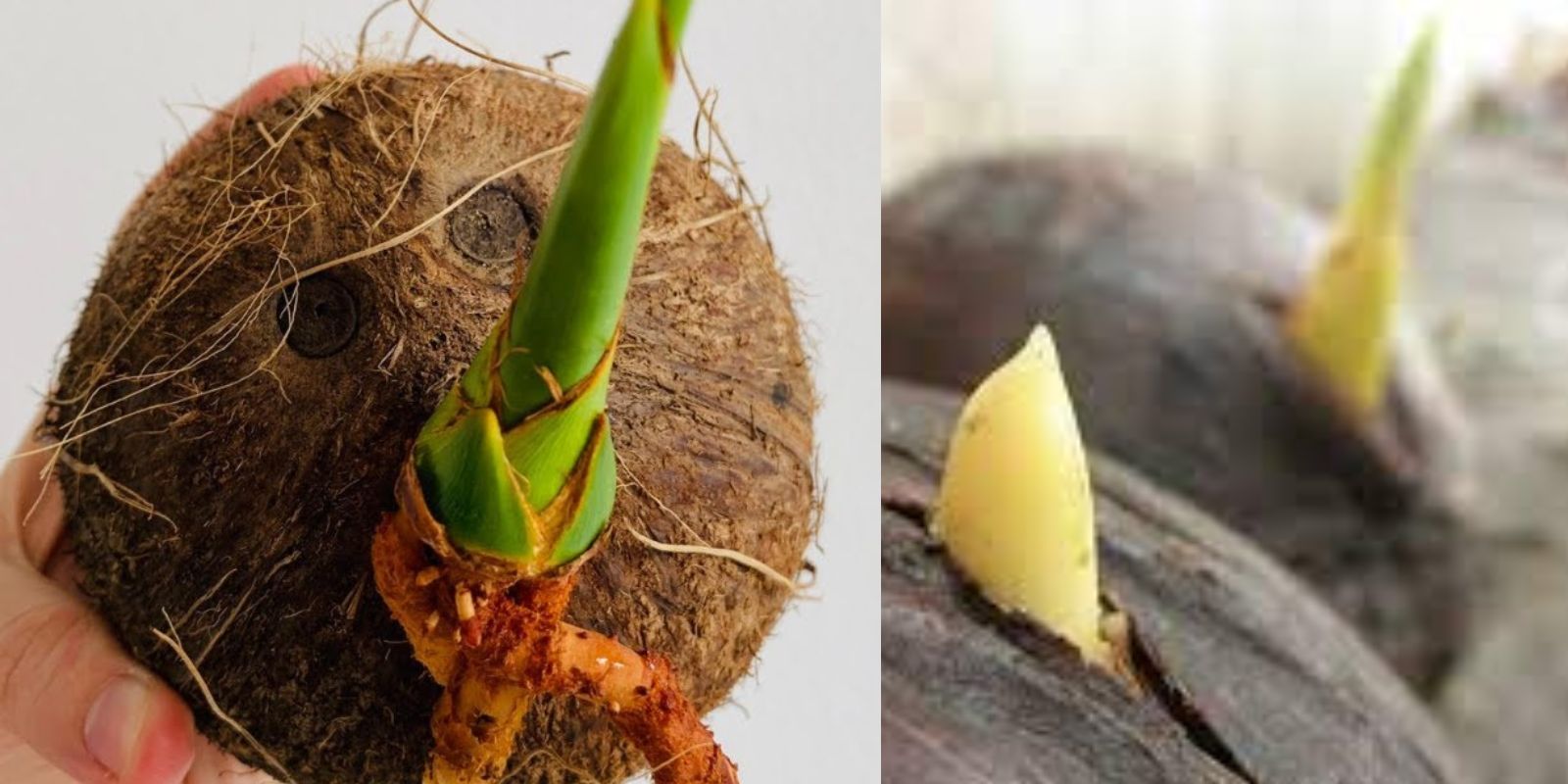Coconut trees (Cocos nucifera) are iconic symbols of tropical paradise, offering not only aesthetic appeal but also delicious and versatile fruits. If you’ve ever dreamed of growing your own coconut tree, starting from the fruit itself is a rewarding experience. In this comprehensive guide, we’ll walk you through the process of growing a coconut tree from its fruit, detailing everything from selection to care.
Why Grow a Coconut Tree?
Coconut trees are incredibly versatile. Beyond the coconuts they bear, they add charm to any garden or yard with their graceful fronds. These palms also have environmental benefits, like reducing carbon dioxide and providing shade. Plus, the process of growing your own tree offers a hands-on gardening challenge, perfect for enthusiasts.
Step 1: Selecting the Right Coconut
The first step in growing a coconut tree is choosing the right coconut. Follow these tips for selection:
- Mature and Fresh: Look for a mature coconut with the husk intact. A store-bought dehusked coconut won’t work for this project.
- Test for Water: Shake the coconut gently. A good coconut will have water sloshing inside, which is essential for germination.
- Inspect for Damage: Avoid coconuts with visible cracks or mold, as these are unlikely to germinate.
Step 2: Preparing the Coconut for Germination
To encourage the coconut to sprout, you’ll need to prepare it properly:
- Soak the Coconut:
- Submerge the coconut in a bucket of water and leave it for 2-3 days.
- This softens the husk and helps initiate the germination process.
- Find the Germination Side:
- Examine the coconut for three circular pores, commonly called “eyes.” One of these will serve as the sprouting point.
Step 3: Planting the Coconut
Once the coconut is ready, it’s time to plant it:
- Choose the Right Spot or Container:
- If planting outdoors, pick a location with sandy, well-draining soil and full sunlight.
- If growing in a pot, choose one large enough to accommodate the coconut and eventual roots.
- Position the Coconut:
- Lay the coconut on its side with the eyes slightly exposed.
- Cover the bottom half with soil, leaving the top visible to avoid rotting.
- Soil Requirements:
- Coconut palms thrive in sandy, loose soil. If planting in a pot, use a mix of sand and potting soil.
Step 4: Providing the Ideal Environment
Coconut trees are tropical plants, so mimicking their natural environment is essential:
- Temperature:
- Maintain a warm environment with temperatures between 75–85°F (24–29°C).
- Avoid cold drafts, as these can hinder growth.
- Sunlight:
- Place the coconut in a sunny spot that receives at least 6–8 hours of direct sunlight daily.
Step 5: Watering and Care During Germination
Consistent care is crucial for the germination process:
- Water Regularly:
- Keep the soil moist but not soggy. Overwatering can lead to root rot.
- Monitor Progress:
- Germination can take 3–6 months, so patience is key.
- Check for sprouts emerging from the eyes, indicating success.
Step 6: Transplanting the Seedling
Once the coconut sprouts and grows a stem, it’s time to transplant:
- Choose a Larger Pot or Outdoor Spot:
- If starting in a pot, transfer the seedling to a larger container.
- If outdoors, ensure the new spot has adequate sunlight and space for growth.
- Handle with Care:
- Avoid damaging the roots during transplantation.
- Spacing:
- For outdoor planting, space coconut trees at least 20 feet apart to accommodate their wide fronds and roots.
Step 7: Long-Term Care for Your Coconut Tree
Once your coconut tree is established, regular care will ensure it thrives:
- Watering:
- Coconut palms are drought-tolerant but prefer consistent moisture. Water deeply once a week.
- Fertilizing:
- Use a balanced fertilizer with potassium, magnesium, and nitrogen every 2–3 months.
- Pruning:
- Remove dead or damaged fronds to maintain the tree’s health.
- Pest Control:
- Watch for common pests like mites or beetles. Use neem oil or other organic treatments as needed.
Common Challenges and Solutions
- Slow Germination:
- Ensure the coconut is fresh and the environment is warm and humid.
- Root Rot:
- Avoid overwatering and ensure the soil is well-draining.
- Yellowing Leaves:
- This could indicate a nutrient deficiency. Add a palm-specific fertilizer.
Harvesting Coconuts
Your coconut tree will take about 6–10 years to start producing fruit, with peak production between 15–20 years. Here’s how to harvest:
- Look for Ripeness:
- Mature coconuts are brown and fall naturally when ready.
- Cutting Coconuts:
- Use a pole or machete to gently detach the coconuts if they haven’t fallen yet.
Why Grow Your Own Coconut Tree?
Growing a coconut tree isn’t just a fun project—it’s a way to connect with nature and enjoy the fruits of your labor. The tree provides shade, beauty, and edible coconuts that can be used in countless ways, from cooking to crafting.
🌴 Ready to grow your own tropical oasis? Share your progress with us and inspire others!
Hashtags:
#GrowCoconuts #TropicalGardening #PlantLovers #DIYGardening #CoconutTreeCare #GardeningGoals #EcoFriendlyLiving

